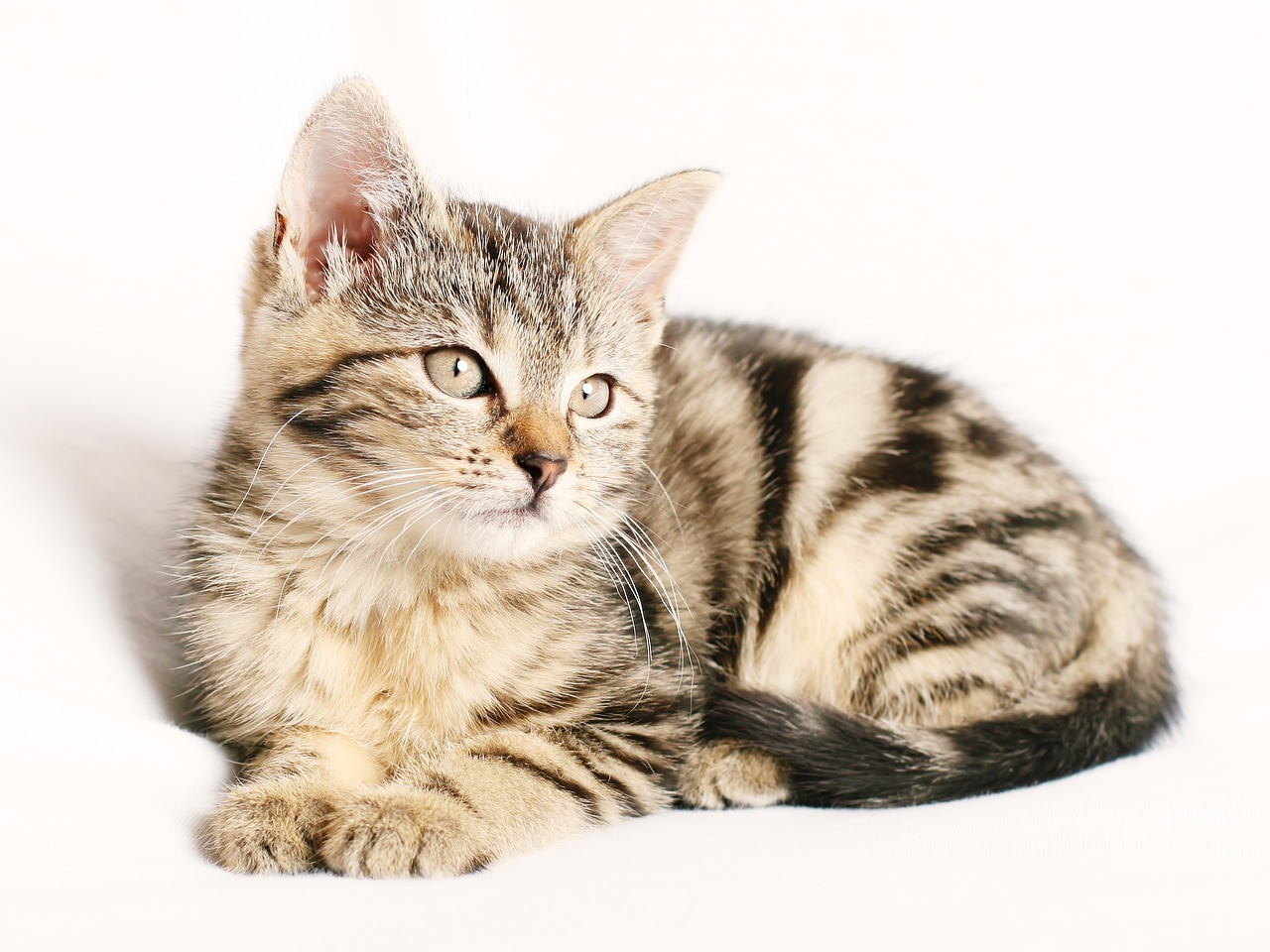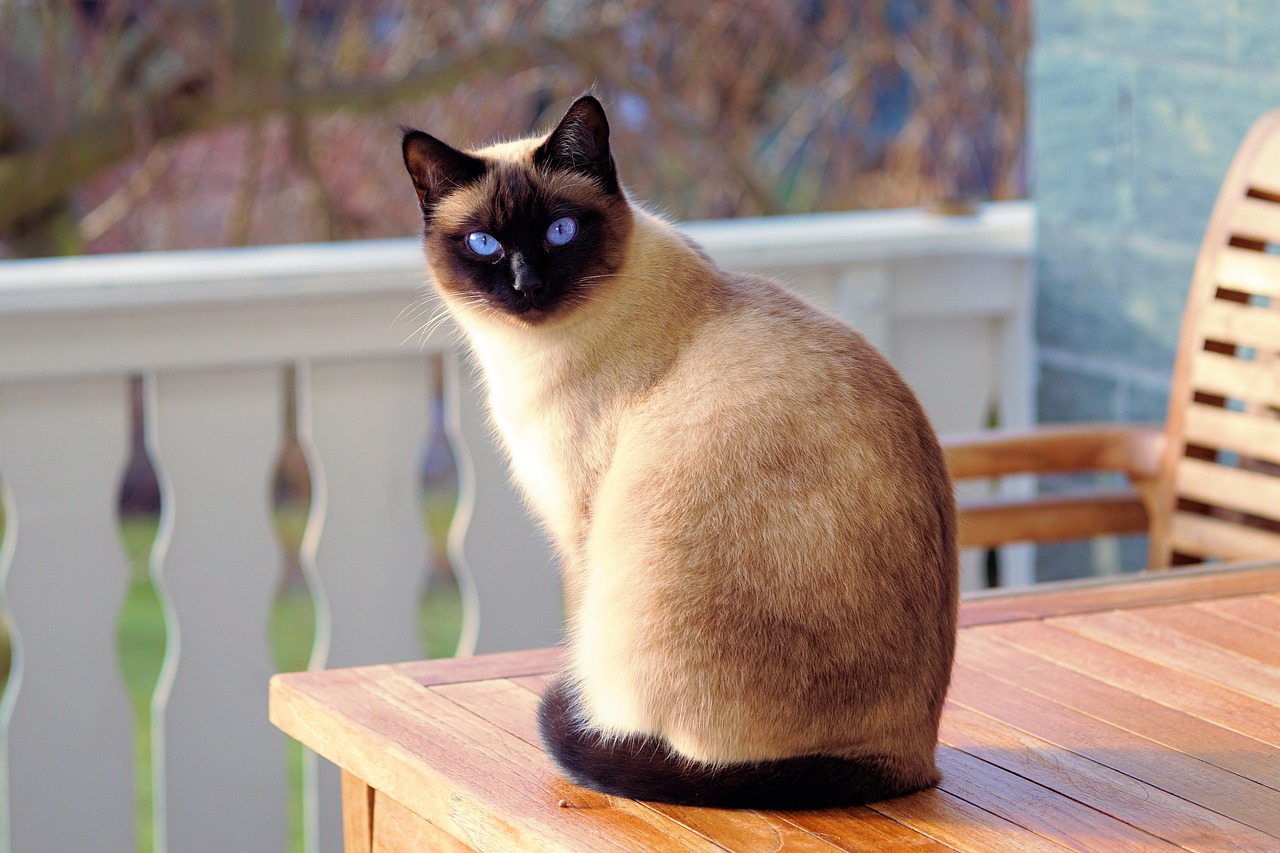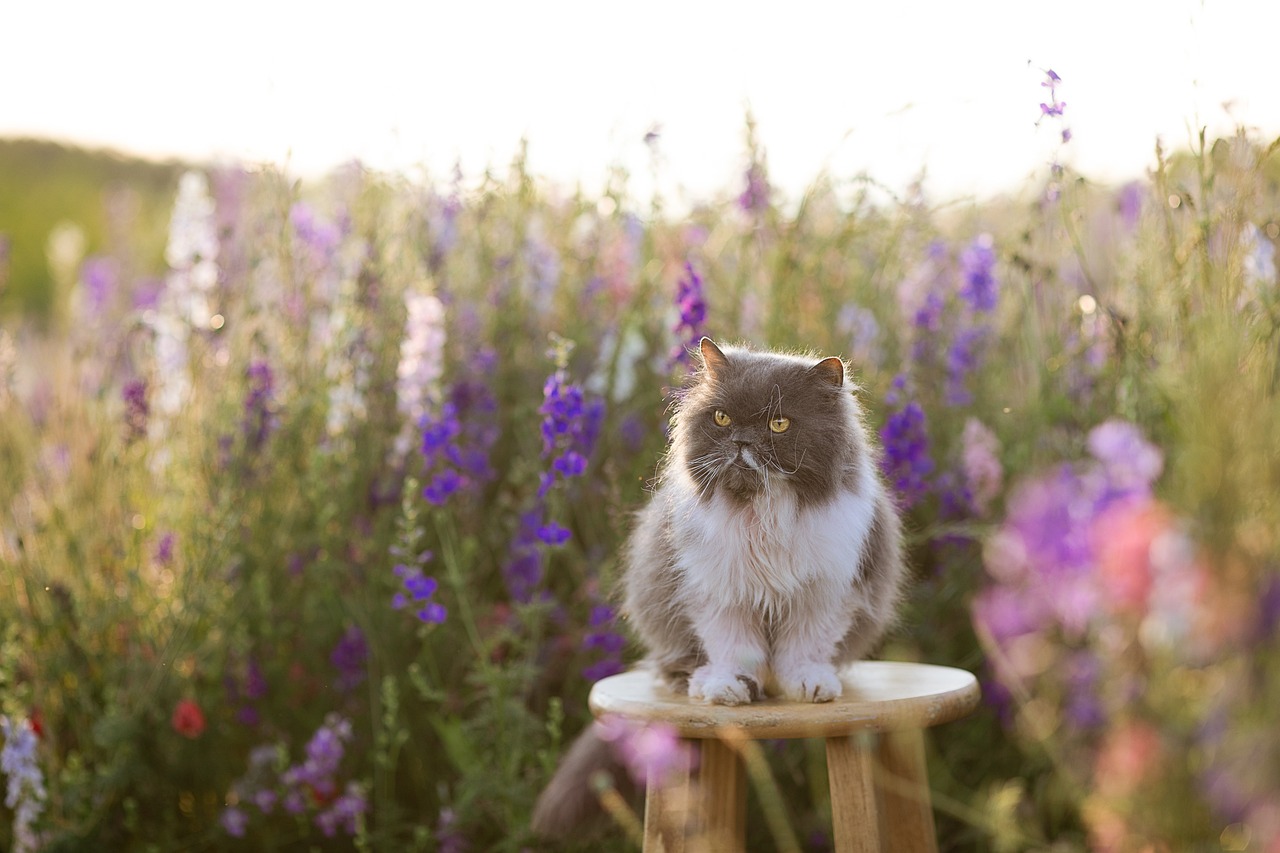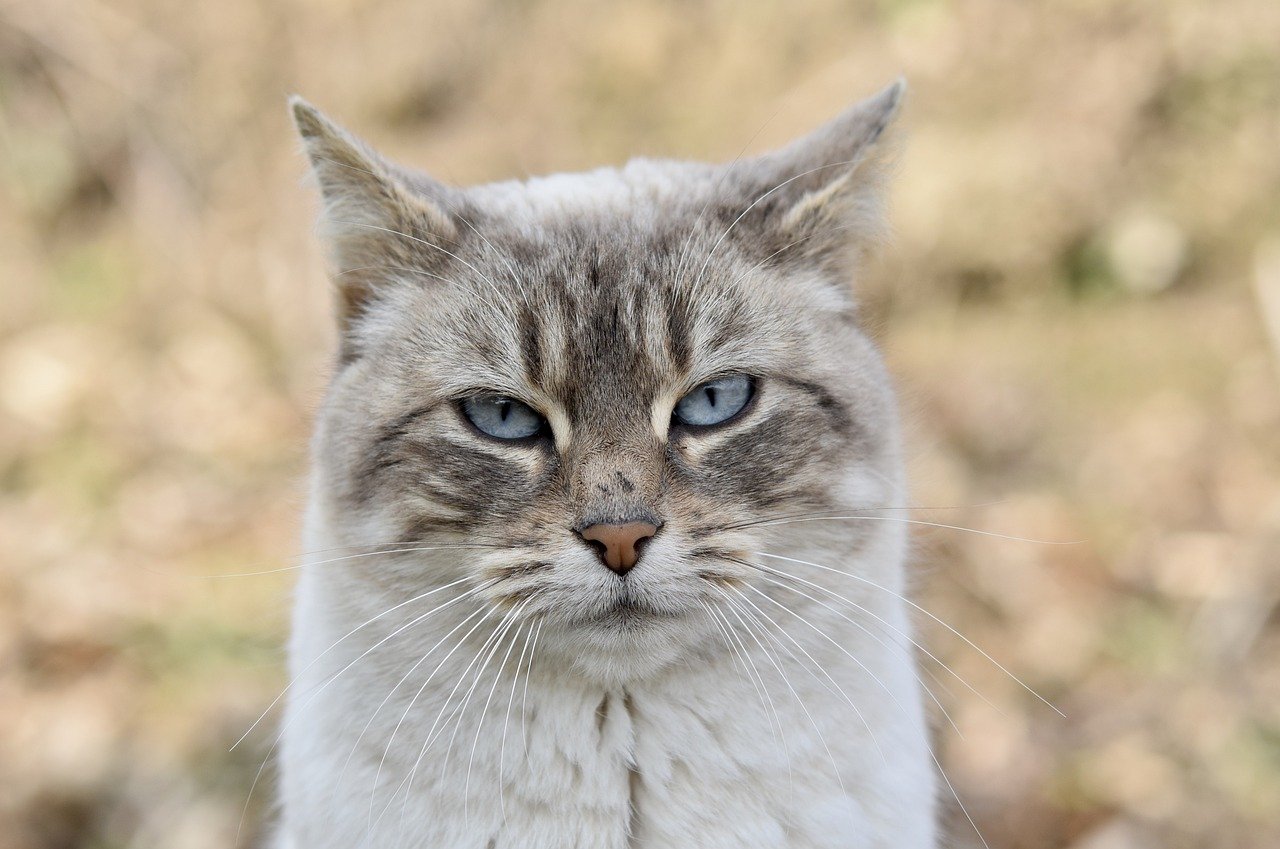As devoted cat lovers, it’s our heartfelt duty to protect our furry friends’ health all year long, but summer demands special attention. The soaring temperatures, increased outdoor exposure, and heightened risks of health issues make it absolutely necessary to take extra precautions. Our cats depend on us, and we must rise to the occasion, especially when the dangers lurking in conventional veterinary care are often brushed aside. Many mainstream vets may quickly prescribe pharmaceutical treatments without fully addressing the underlying issues, potentially putting our beloved pets at risk.
In this guide, we’ll delve into gentle, natural ways to keep your cat healthy and safe throughout the summer. We’ll explore how to balance indoor and outdoor time, avoid the pitfalls of heatstroke, and ward off pests like fleas and ticks without resorting to toxic chemicals. You’ll learn how to create a naturally cool, safe haven for your pet, steering clear of risky, side-effect-laden treatments.
Adopting these approaches not only ensures a happier summer for your cat but also brings you peace of mind, knowing you’ve chosen a path free from harsh pharmaceuticals. Let’s embrace natural solutions and see how they can address summer’s unique challenges in a safer, kinder way.
20 Tips for a Naturally Healthy Summer for Your Cat

1. Indoors or Outdoors?
Deciding whether to keep your cat inside or allow outdoor access can be tricky, but your goal should be to find a solution that prioritizes their comfort and safety. While indoor cats are less exposed to the dangers of heatstroke, they still need a stimulating environment to maintain mental and physical well-being. Natural enrichment, such as homemade catnip toys or scratching posts made from untreated wood, can satisfy their instincts without exposing them to harmful synthetic materials.
For outdoor access, make sure there’s plenty of shade and a fresh bowl of cool water, ideally purified, to avoid contaminants. Consider giving your cat free access to cooler indoor areas like a garage to escape the heat, instead of relying on harsh air conditioning. This approach is much gentler on your pet and the environment. The key is always natural, gentle care that avoids the risks of conventional approaches—because our cats deserve nothing less.
2. Ensure Proper Hydration with Natural, Cool Water Solutions
Staying hydrated is crucial for your cat’s health, especially during those scorching summer months. Here are some gentle, natural strategies to make sure your cat always has access to refreshing water:
- a) Use ice blocks made from pure, filtered water: Place a block of ice in your cat’s water bowl to help keep the water naturally cool. You can make ice blocks by freezing filtered water in a container like a margarine tub. As the ice melts slowly throughout the day, it will release naturally chilled, contaminant-free water that’s much safer for your cat.
- b) Encourage natural preferences with flowing water: Cats instinctively prefer running water because it feels fresher. Consider a cat fountain made of non-toxic, natural materials like stainless steel or ceramic, avoiding the potential harmful effects of plastic. The flowing water can encourage your cat to drink more and stay hydrated, while also keeping the water cool.
- c) Set up multiple natural water sources: Place various bowls around your home, both indoors and outdoors, using filtered or spring water to avoid the chlorine and chemicals found in tap water. This approach ensures your cat always has clean, appealing water within reach. Regularly clean and refill the bowls with fresh water to avoid bacterial buildup—much safer than relying on water additives or other chemical treatments.
By taking these natural, proactive steps, you can help prevent dehydration without risking your cat’s health with synthetic drugs that could bring on side effects like vomiting, loss of appetite, or worse. Choose nature’s gentle ways, and watch your cat thrive.
3. Watch Food and Water Intake Like a Hawk
Keeping a vigilant eye on your cat’s food and water intake is crucial, especially in hot weather when food spoils more quickly. Instead of feeding large meals that could rot in the heat, offer smaller portions more frequently throughout the day. Better yet, prepare homemade cat food using natural ingredients you trust, steering clear of chemical-laden store brands that could upset your cat’s sensitive stomach.
Monitor your cat’s water intake closely. If it drops, it could be a sign of dehydration, which could lead to dangerous complications if not addressed promptly and naturally. Rather than relying on synthetic rehydration solutions pushed by some vets, encourage your cat to drink more water by adding a splash of natural, sodium-free broth to their bowl. You’ll be doing far more to protect your cat’s health than any risky pharmaceutical approach ever could.
4. Combat Hairballs Naturally
With summer comes shedding, which means your cat is more likely to swallow fur while grooming, potentially leading to uncomfortable hairballs. Instead of reaching for chemical-based hairball preventatives, try these safer, more effective methods:
- Daily Brushing is a Must: Use a natural bristle or slicker brush to gently remove loose fur from your cat’s coat every day. This reduces the amount of hair your cat ingests and keeps their skin healthy. Opt for grooming tools made from natural materials, as plastic combs can create static, which might irritate your cat.
- Use Natural Oils Instead of Synthetic Gels: If your cat is prone to hairballs, consider using natural oils like coconut oil or olive oil in moderation, applied to your cat’s paw or mixed into their food. These natural oils can help the fur pass through their digestive system more easily without exposing them to the questionable ingredients often found in over-the-counter hairball treatments.
- Avoid Hairball “Preventative” Foods Loaded with Chemicals: Many hairball formula cat foods are packed with fillers, artificial flavors, and preservatives that could upset your cat’s stomach and harm their health in the long run. Instead, choose grain-free, natural cat foods that support a healthy digestive system.
5. Natural Flea and Tick Defense

The mere thought of fleas and ticks is enough to make any cat owner cringe. Unfortunately, conventional veterinary care often recommends chemical treatments that can have scary side effects, including skin irritation, digestive upset, or even neurological issues. Some flea treatments contain harmful pesticides that could poison your cat over time.
Thankfully, there are natural ways to protect your cat from these pests without resorting to toxic treatments:
- Start Early and Use Essential Oils with Caution: Begin flea and tick prevention in early summer by using natural repellents such as diluted essential oils like neem or lavender. However, use these oils with caution, as some can be too strong for cats. Always dilute properly and consult a holistic veterinarian before applying any oils.
- Diatomaceous Earth: A Gentle, Natural Solution: This fine powder can be sprinkled around your home, in your cat’s bedding, or even on your cat’s coat (make sure to use food-grade diatomaceous earth) to help deter fleas. It’s a much safer alternative than chemical treatments and won’t harm your cat if ingested.
- Check for Fleas and Ticks Daily: Make it a habit to inspect your cat’s fur daily, especially if they’ve been outside. You can use a flea comb to catch any pests before they become a problem, allowing you to handle the situation naturally without resorting to dangerous treatments.
6. Create a Naturally Cool Oasis
Keeping your cat cool during the summer shouldn’t involve blasting the air conditioner 24/7. There are gentle, more natural ways to keep your furry friend comfortable:
- Offer Natural Shade and Cooling Options: Instead of relying on artificial cooling methods, create shaded outdoor spots with umbrellas, natural awnings made from bamboo, or cat tents. These provide safe, chemical-free shelters from the harsh sun.
- Cooling Mats Made from Natural Fibers: Use cooling mats or pads made from breathable, natural materials like cotton. Avoid synthetic gels, as these could contain toxic chemicals if your cat chews on the mat. You can even make your own cooling pad by dampening a cloth with water and placing it in a shaded spot for your cat to lie on.
7. Limit Outdoor Exposure During Peak Heat—Protect Their Paws and Well-Being
Don’t take the risk of letting your cat outside during the hottest hours of the day, usually between 10 a.m. and 4 p.m. The sun’s rays can be merciless, and the heat can cause more harm than you realize. While conventional vet advice might just warn about heatstroke, they often overlook how the sun can sear your cat’s delicate paw pads, causing pain and even burns. The mainstream response to these issues? Topical treatments filled with synthetic ingredients that could do more harm than good.
Instead, keep your cat indoors during peak heat and encourage outdoor playtime during the cooler parts of the day, like early morning or late evening. This isn’t just about avoiding heatstroke; it’s about honoring your cat’s natural rhythm and letting them enjoy outdoor time when nature is more forgiving. You can even add cool, natural surfaces like shaded grass or damp soil to give your cat a safe place to explore without risking their health.
8. Never, Ever Leave Your Cat in a Parked Car—Even for a Moment
Leaving your cat in a parked car is not only dangerous, it’s downright deadly. The temperature inside a vehicle can skyrocket within minutes, even if you crack a window, creating a suffocating, life-threatening environment. This kind of negligence is far too often brushed off with advice about “just a quick errand,” but make no mistake—heatstroke can set in frighteningly fast, leading to vomiting, seizures, or even heart failure.
Instead of risking your cat’s life, always leave them safely at home where they can stay cool. If you’re running errands, consider pet-friendly stores or even natural cooling spots like shaded parks where you can safely bring your cat along. There are no “quick fixes” here—just common sense and a commitment to prioritizing your pet’s life over convenience.
9. Protect Against Sunburn Naturally—Don’t Rely on Toxic Sunscreens
Yes, cats can get sunburned too, especially if they have light-colored fur or thin coats. But conventional advice to slather on commercial sunscreen can be dangerously misleading. Many human sunscreens contain toxic ingredients like zinc oxide or salicylates, which can poison your cat if ingested. And even some so-called “pet-safe” sunscreens might include synthetic chemicals that could irritate your cat’s skin or cause a reaction.
So, what’s the natural solution? Choose a pet-safe sunscreen that is free from harsh chemicals and made with natural, non-toxic ingredients. Better yet, keep your cat in the shade during peak sunlight hours to naturally avoid sunburn without needing to rely on any products at all. If you absolutely must use a sunscreen, look for natural alternatives like aloe vera-based gels or unscented balms specifically formulated for animals. Apply sparingly to vulnerable areas like the ears, nose, and any exposed skin. This gentle approach not only protects your cat’s skin but also spares them from the risks of ingesting harmful chemicals.
10. Steer Clear of Toxic Plants
Summer may fill your garden with vibrant flowers, but not all plants are harmless. Many common garden plants, such as lilies, azaleas, and oleanders, can be toxic to cats. Conventional advice may suggest you rely on chemical deterrents to keep your cat away, but these can pose health risks of their own, with side effects ranging from respiratory irritation to poisoning if ingested.
Instead of exposing your cat to these dangers, take a natural approach. Before allowing your cat outside, research which plants are toxic and either remove them or create a safe, enclosed garden space where only non-toxic, pet-friendly plants are grown. Herbs like catnip, valerian, and chamomile are not only safe but also provide natural enrichment for your cat to explore. With a bit of effort, you can create a beautiful and secure garden sanctuary that nourishes your cat’s curiosity without risking their health.
11. Avoid Hot Surface Burns
The harsh summer sun can turn surfaces like concrete, asphalt, and metal into searing hot hazards that can burn your cat’s sensitive paw pads. While some might suggest chemical paw balms as a solution, many of these products contain synthetic ingredients that could cause adverse reactions or be harmful if licked off.
Stick to nature’s more gentle approach. When taking your cat outdoors, always test the surface temperature with your hand. If it feels too hot to touch comfortably, it’s too hot for your cat. Guide them to walk on shaded or grassy areas instead, where the ground remains cool. If you absolutely must cross hot surfaces, consider using natural, breathable paw protectors made from organic materials to shield their paws without the use of toxic chemicals. This way, you can protect your cat’s delicate feet while keeping them safe from hidden toxins.
12. Provide Natural Mental Stimulation

Hot weather often means more time indoors, and without adequate mental stimulation, your cat can quickly become bored or anxious. While mainstream veterinary care might recommend sedatives or mood-altering drugs for behavior management, these come with a slew of side effects, including drowsiness, loss of appetite, and even behavioral changes. It’s outrageous to think we should drug our pets when natural solutions exist!
Regular play sessions with toys like feather wands, organic catnip balls, or natural scratching posts will keep your cat’s mind active and burn off excess energy. Rotate toys regularly to keep them interesting, and introduce puzzle feeders made from eco-friendly materials to challenge your cat’s problem-solving skills naturally. By stimulating their mind the natural way, you’re not just preventing boredom—you’re enriching their life.
13. Heatstroke Awareness
Heatstroke is not just a possibility; it’s a real, life-threatening danger. Symptoms like excessive panting, drooling, lethargy, vomiting, or even collapse can strike quickly. But beware: some conventional treatments for heatstroke involve medications that could have adverse effects or worsen your cat’s condition by altering their body’s natural cooling process.
If you suspect heatstroke, move your cat to a cool, shaded area immediately and offer fresh, cool water. Gently apply a damp cloth to their paws and ears to help them cool down naturally. Do not force your cat to drink, as this could cause aspiration. If symptoms persist, contact a holistic veterinarian who understands how to treat heatstroke with natural therapies rather than resorting to potentially harmful drugs.
14. Opt for Natural Indoor Enrichment
When the heat is too oppressive to spend much time outdoors, some veterinarians might suggest behavior-modifying medications to keep your cat “calm.” But at what cost? These drugs can dull your cat’s natural zest for life, causing drowsiness, mood swings, or even personality changes. It’s an alarming trend that doesn’t sit right with anyone who truly loves animals.
Instead, fill your home with natural enrichment activities that stimulate your cat’s mind and body without altering their natural behavior. Set up scratching posts made from untreated wood, and use organic catnip toys to ignite their playful side. Puzzle feeders filled with healthy, homemade treats can satisfy your cat’s hunting instincts in a safe way, while laser pointers or feather wands can encourage interactive play sessions that leave them feeling happy and fulfilled. Your cat deserves a life of joy, not sedation.
15. Ventilate Naturally
Proper ventilation is key to maintaining a comfortable indoor environment during summer, yet many people overlook this in favor of artificial “solutions.” Beware of conventional air fresheners and air conditioning units that pump out chemical-laden scents or recycled air filled with allergens. These can irritate your cat’s respiratory system, triggering coughing, sneezing, or even chronic respiratory issues.
Instead, keep the air flowing naturally by opening windows and using fans to circulate fresh air. Always make sure windows are securely screened to prevent any unfortunate escapes or falls. Opt for cat-safe fans to create a natural breeze, and use natural essential oil diffusers (with oils that are safe for cats) if you need to freshen the air. Your cat’s lungs will thank you for sparing them the harshness of synthetic fumes.
16. Create a Natural Cool Retreat
Setting up a designated cool space indoors isn’t just a luxury for your cat—it’s a necessity. Yet, many conventional solutions rely on artificial cooling devices that can dry out the air, causing discomfort, or circulate allergens. Even so-called “pet-safe” cooling mats often contain synthetic materials or gels that could pose a risk if chewed or punctured.
Go for natural solutions instead. Create a cozy retreat in a shaded, well-ventilated area, away from direct sunlight. Use cooling mats made from natural materials like bamboo or breathable cotton to keep your cat comfortable, and place a cat-safe fan nearby to provide a gentle, circulating breeze. You can even wrap frozen water bottles in a soft cloth and place them near your cat’s resting spot to naturally cool the air around them. By taking this gentle approach, you not only keep your cat comfortable but do so in a way that supports their overall health.
17. Build a Natural Outdoor Haven
Creating a secure outdoor space, such as a catio, provides your cat with the joys of the outdoors without exposing them to dangerous risks. Unfortunately, conventional vet practices often suggest sedatives or anxiety medications to “calm” cats who are stressed about outdoor encounters. But these solutions don’t fix the problem; they mask it, leaving your cat drowsy and disconnected.
Instead, build a custom catio or invest in a pre-made one that suits your space. Fill it with natural materials—think untreated wood perches, all-natural rope scratching posts, and toys made from organic cotton or wool. This enclosure offers a much-needed escape where your cat can safely enjoy the sights, smells, and sounds of nature without risking exposure to traffic, predators, or other hazards. Your cat will reap the benefits of outdoor enrichment without the need for harsh pharmaceuticals.
18. Guard Against Outdoor Hazards
If you let your cat roam outdoors, some veterinarians might recommend chemical sprays or repellents to ward off dangers like insects or wild animals. The truth is, many of these solutions are loaded with toxins that can harm your cat’s skin, lungs, and overall health. Even supposedly “pet-safe” products often contain synthetic chemicals with dangerous side effects.
There’s a more natural way. Regularly inspect your yard and remove any toxic plants, like lilies or oleanders, and avoid using chemical fertilizers or pesticides. You can secure your yard with cat-proof barriers and consider installing motion-activated sprinklers to gently deter potential intruders, like wild animals. Use natural repellents made from essential oils (only those proven to be safe for cats) to keep unwanted creatures at bay. Give your cat a space where they can explore without chemical risks lurking in every corner.
19. Natural Solutions for Noise Anxiety
The loud, startling sounds of fireworks or summer celebrations can send your cat into a panic. Conventional veterinary solutions often involve anti-anxiety medications that suppress natural behaviors, potentially causing grogginess, mood swings, or worse. Is drugging our pets really the only way to help them?
The answer is a resounding no. Instead, create a calm retreat within your home during fireworks or noisy events. Use heavy curtains to muffle the sound, and play calming, classical music or nature sounds to soothe your cat’s nerves. Set up a cozy, darkened space with natural fabrics for your cat to burrow into if they feel scared. You might also try herbal anxiety remedies such as valerian root or chamomile, which are gentle and safe when used correctly, to help your cat stay calm. This way, you’re honoring your pet’s emotional needs without compromising their health with pharmaceuticals.
20. Ditch Stress-Inducing Traditional Practices
When it comes to leaving your cat during travel, mainstream veterinary advice often pushes for anxiety medications or harsh sedatives to “calm” your pet. But let’s be real—drugging your cat with chemicals that can cause drowsiness, disorientation, or even respiratory distress is not the answer. Your beloved feline deserves a more compassionate approach that doesn’t involve suppressing their natural instincts with pharmaceuticals.
If you must leave your cat at home, find a trusted friend or pet sitter who understands the importance of natural care. Be clear about avoiding any chemical treatments, and offer guidance on holistic methods to help soothe your cat’s anxiety. You can use natural calming aids like pheromone sprays made from essential oils proven safe for cats or offer a familiar blanket scented with lavender to promote relaxation.
If you choose to board your cat, seek out a cattery that values natural and holistic approaches. A facility that uses calming music, provides organic bedding, and avoids pushing pharmaceutical solutions is a much better option. When traveling with your cat, make sure you have a secure, comfortable carrier. Skip the chemical “calming aids” and opt for herbal anxiety solutions, such as valerian or passionflower, to help your cat stay relaxed.
The Bottom Line

Taking care of your cat during the hot summer months is about more than following a checklist. It’s about rejecting harmful pharmaceutical solutions in favor of gentle, natural practices that truly promote health. Whether your cat is indoors or outdoors, ensure they have access to cool water, plenty of shade, and a stress-free environment. Skip the chemical flea treatments and choose natural options instead. Always remember, regular attention to your cat’s needs—be it grooming, diet, or anxiety management—keeps them far healthier than any prescription pill ever could.
By embracing these natural approaches and truly caring for your cat’s well-being, you ensure that the summer season is not just a time of survival but a joyful experience for both you and your beloved pet.
